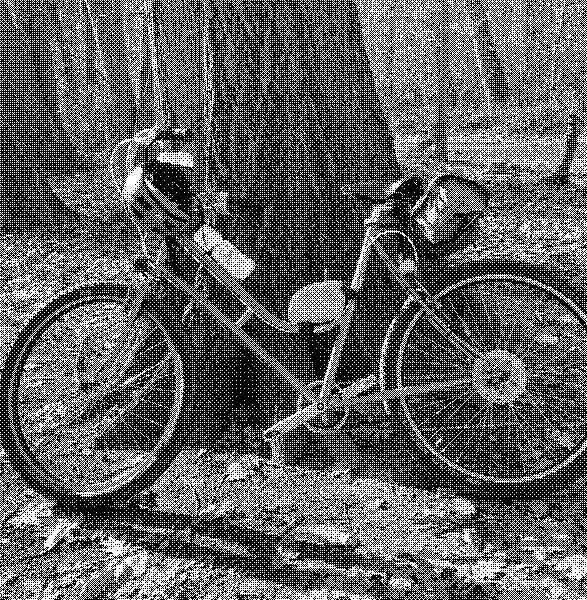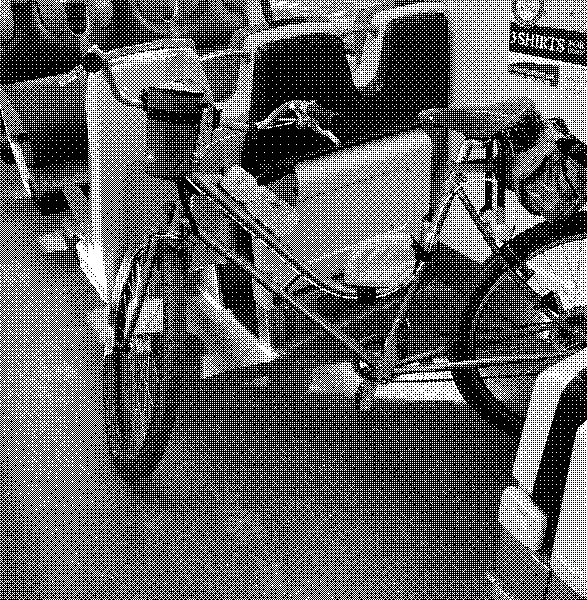
2022-12-31
Note: bike jargon glossary at end of this article
I grew up riding bikes, living at the edge of a city and beginning of the suburbs. I was lucky to grow up near extensive woods with lots of both urban riding as well as offrode forest riding in an urban area. In college I biked with friends who were more enamored with bikes, organizing rides and silly races (and a root beer keg). They really got me excited for mountain biking, and after college I continued to ride as my main form of transportation, mostly on a singlespeed mountain bike for a few years, but later on a stable of bikes.
Early in the pandemic I moved out to the suburbs for a few months and lived near a county park with extensive mountain biking trails. I didn't bring my mountain bike but my cyclocross bike. I have 36mm knobby tires on this bike, and it's set up singlespeed/fixed. After a lifetime of living in cities I really enjoyed going out on daily mountain bike rides, especially after I've been so envious of others who lived near trails in more rural and suburban areas. In my mind these people with ideal bike backyards always live in Colorado or North Carolina!
I live in NYC near a large urban park, one with woods and about a mile trail but it's technically not a permitted public mountain bike trail. The known public bike trails in New York can be counted on one hand. Clue: there aren't any in Brooklyn, the borough I live in. For a long time (a year?) I had been excited to head out to Cunningham Park in Queens to do some real mountain biking. I had watched a few youtube videos, and was excited to try it out, but I wasn't sure how 'good' the trails would be.
I don't own any bike with front or rear suspension and never have. I am a 'fully rigid' kind of rider. This summer, after almost two decades of admiring Rivendell bikes I purchased my own Rivendell: a Clem Smith Jr. "L", size large. This is a very unusual frame: the longest production frame of any bike manufacturer, combo of hand lugged and TIG-welded, hand painted, a mixte "step through" frame, and I had it set up with thick knobby 29" wheels and a 1x9 gearing. It also has generator lighting, which I recently had my local bike shop install.

My goal was not just an 'everything' bike but one which could be used for bikepacking, trails with some singletrack, and urban riding all in one.
This kind of riding has been described under similar names and concepts and communities online. You may think of it within the spectrum of 'hybrid' bikes. You might see it called ATB (all terrain bike), xbiking (a reddit group), and Rivendell itself uses terms like "hillibike" instead of 'mountain biking' and there are other terms out there.
Bikepacking is a term for (mostly) offroad extended bike tours. My bike isn't exactly one of the bikepacking-specific ones, since I don't think it makes sense to buy a $2000 bike just for camping on it a week or two each year, but it's one that can work pretty well for it.

To get to Cunningham park required a long commute. I biked to the Long Island Railroad station in Brooklyn, found the elevator to take my bike down, paid for a ticket and rolled the bike on. My bike was slightly too big to perfecly tuck into the commuter rail train, but no matter, the conductor didn't mind. 35 minutes later we pulled into...Queen Village, which is 2 1/2 miles from the bike park, but the closest station. I had 20 minutes of first urban riding and then suburban riding. I stopped at a bagel shop and got a tuna on 'everything' bagel, with capers and onions and tomato, and a small coffee and cole slaw. This place was 'to go' only so I packed it up and biked to the trail and ate it at the trail head. At this point, it had been an hour and forty-five minutes since leaving my house. I saw a few solo riders come through. I read the 'rules' on the posted sign, studied the map and took a photo. The Cunningham trails feature a few easier loops, and some smaller intermediate and advanced trails. I started by trying the easier loops. There was a lot of mud, and only a few features, that were kind of optional since you could bike around them pretty easily on the simpler trails. It felt nice to be moving around on a bike outdoors in the winter. I had biked an unseasonably warm day to ride and didn't need to wear much of a coat or gloves. I didn't love that the forest area we were in was surrounded on all sides by heavy traffic and highways. I don't love riding in the woods with the sound of whooshing speeding cars and trucks all around me.
It took me about 20 minutes to go around the main loop, and I started it again but immediately took the turn-off for the intermediate trail. Less mud, but more obstacles now, but pretty randomly placed. A trail is said to be 'flowy' if it has nice long flowing sections with only occasional features. This trail wasn't exactly flowy but it wasn't chock full of challenges either, and I only stopped to cross a section by foot or stumble up a muddy hill pushing my bike once or twice. On my second loop I saw a man on a 'one-wheel' and two young kids on small bikes. He was going the wrong direction on the trail and said his kids were not enjoying the trail and he was trying to get them out of there. I warned them of some upcoming mud banks. I was thinking maybe it's not a perfect fit trail for complete beginners, mostly because I think the uphill climbs, while not so bad, are not good for those who aren't very fit or used to climbing on a bike.
I had read online that if you cross over the highway nearby the second section of the park had more challenging trails. It was true the second section was a bit more of a challenge, though maybe not signifantly so, but I didn't try every trail there. Overall, I covered most of the park in about 45 minutes or an hour, and enjoyed what I tried, though it wasn't one of my favorite mountain biking spots. To leave, I had to bike back to a train to get home. I decided to skip the commuter rail, since I'd have to time it well to make sure I got there in time and didn't miss the occasional train. I headed to the closest subway, which was quite far away, about 20 minutes of street riding, a gradual uphill some of that time. Then it was an hour and 15 minute train ride home.
When I got near home, I got off the train and decided to do the loop at my local urban park, that's about a mile or two and it's not an official mountain bike course, though I don't see many other folks (walkers or whatnot) using the trail either. While being simpler and having barely any features, it was a comforting ride and most of the time I'll probably just ride there as it's so much more convenient than getting to the other park. Still, I'm glad I tried it and I'll probably go a couple times a year just to try it occasionally and see if it feels any different in the summer months, though maybe I'll go further afield to New Jersey or upstate New York on the train to find more exciting trails and bikepacking when the springtime hits.
1X ("one by..."): Instead of the oldskool 2 or 3 front derailler gears you only have a single gear up front. So you only shift with one hand, have less gears to deal with.
Bikepacking: Multi-day bike tour on trails off road where you bring your tent, food, sleeping bag, water. Bikepackers eschew the traditional 'panniers' of oldskool bike tourers because they can snag on things when riding through trees and bushes for example, and disperse weight in ways that don't work as well off-road. Instead, they hang bangs from the handlebars, seat, and top tube of the bike frame.
Cyclocross: offroad racing on a kind of hybrid bike. Riders go over grass, through mud, up hills, though this isn't really considered 'mountain biking'. They don't jump over rocks and roots much. Parts of the course a rider may choose to run and hold their bike on their shoulder.
Feature: an obstacle on a bike trail. Examples include a 'rock garden' collection of rocks to go over, a jump, a fallen or placed log to jump over, a puddle to cross, a rounded 'berm'.
Hybrid: a now somewhat out-of-favor term for bikes in between mountain bikes and road bikes that are meant for urban riding, though may be able to pass muster on some light trails. Before his company Rivendell was born, its founder Grant Peterson ran the US base of operations for Bridgestone bikes division and one of his revered urban bikes was the XO-1, oriented around this kind of hybrid urban riding.
Lugs: If you have a steel mountain bike, the metal tubes that make up the double diamond frame of a bicycle need to be connected together somehow. It's cheaper to weld them on an assembly line. It's fancier (though not necessarily stronger) to use the oldskool lug method, where little metal hand-made wraps connect the tubes together.
Mixte: "Girls bike" as it's called in the US. This is a lowered 'top tube' frame, which makes it ideal for those with shorter upper body to leg length. City bikeshare programs at least in the states mostly feature this kind of bike. They make it easier for a variety of people heights to adapt to a bike, but aside from this, it's a lot easier to mount your bike, especially if you have bags or racks on the front or back. Europeans ride very practical bikes and many ride this kind of bike.
MTB: Mountain Bike
Rigid: A Mountain bike without front shock on the fork or suspension on the back seat-tube. Retro-grouches think/feel that steel mountain bikes (as opposed to lightweight alumnimum or titanium perhaps) flexes more and you don't need the front fork, or that those kinds of bikes are overkill and meant for racing, not 'a ride in the woods.'
Singlespeed: A bike without gears. Became popular among hipster urban riders in the early aughts after bike messengers (who had been using them for years) were viewed as the ultimate cool urban warriors. Fixed is a singlespeed without a freewheel. When you pedal, the bike moves. If you stop pedaling the bike may continue to move and the pedals will turn and push your feet around or slap you in the shin if you don't pedal along with or resist it to slow down. Advantages: Singlespeed bikes are lighter than geared bikes, simpler to maintain, and provide a good exercise. Disadvantages: you have to stand up to attempt to crank up a hill, and sometimes you may have to push your bike up a hill. They can be bad on your knees if you don't have perfect form or you don't use an external brake (some people don't).
---You can leave a comment by emailing lettuce at the domain ctrl-c.club. Please put the word comment in your subject line and indicate what post you are referencing and what name you'd like listed.